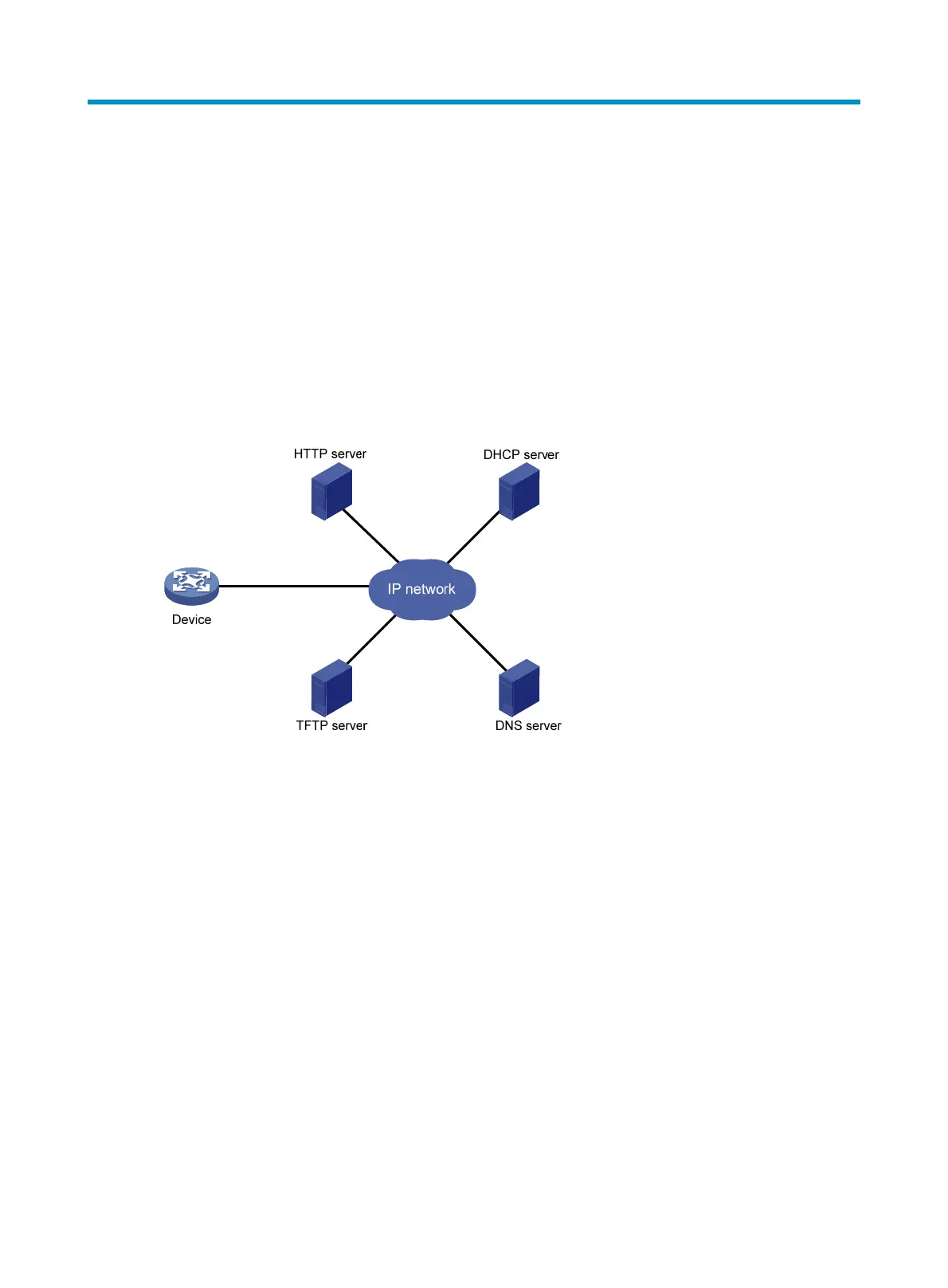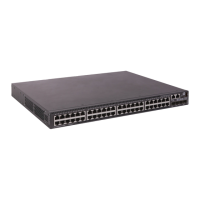130
Using automatic configuration
With the automatic configuration feature, the device can automatically obtain a set of configuration
settings from some servers when it starts up without a configuration file. This feature simplifies network
configuration and maintenance.
Understanding automatic configuration
The automatic configuration feature requires the cooperation of the following servers: a DHCP server, an
HTTP server, a TFTP server, and a DNS server, as shown in Figure 41.
Figure 41 Typical automatic configura
tion network diagram
When the device is powered on without a configuration file, it automatically starts the automatic
configuration process to try to obtain a set of configuration settings. If one attempt fails, the device waits
2 minutes, and then automatically starts the process again for another try. The device continues to make
attempts until it gets a set of configuration settings or it is powered off.
Overall automatic configuration process
As shown in Figure 42, the automatic configuration process includes the following steps:
1. The device selects an interface for automatic configuration. For more information, see "Interface
sel
ection process."
2. After finding an interface, the device enables the DHCP client on the interface and tries to obtain
parameters for automatic configuration from a DHCP server.
Parameters for automatic configuration might include:
{ A temporary IP address.
{ A configuration file name.
{ A TFTP server domain name.
{ A TFTP server IP address.

